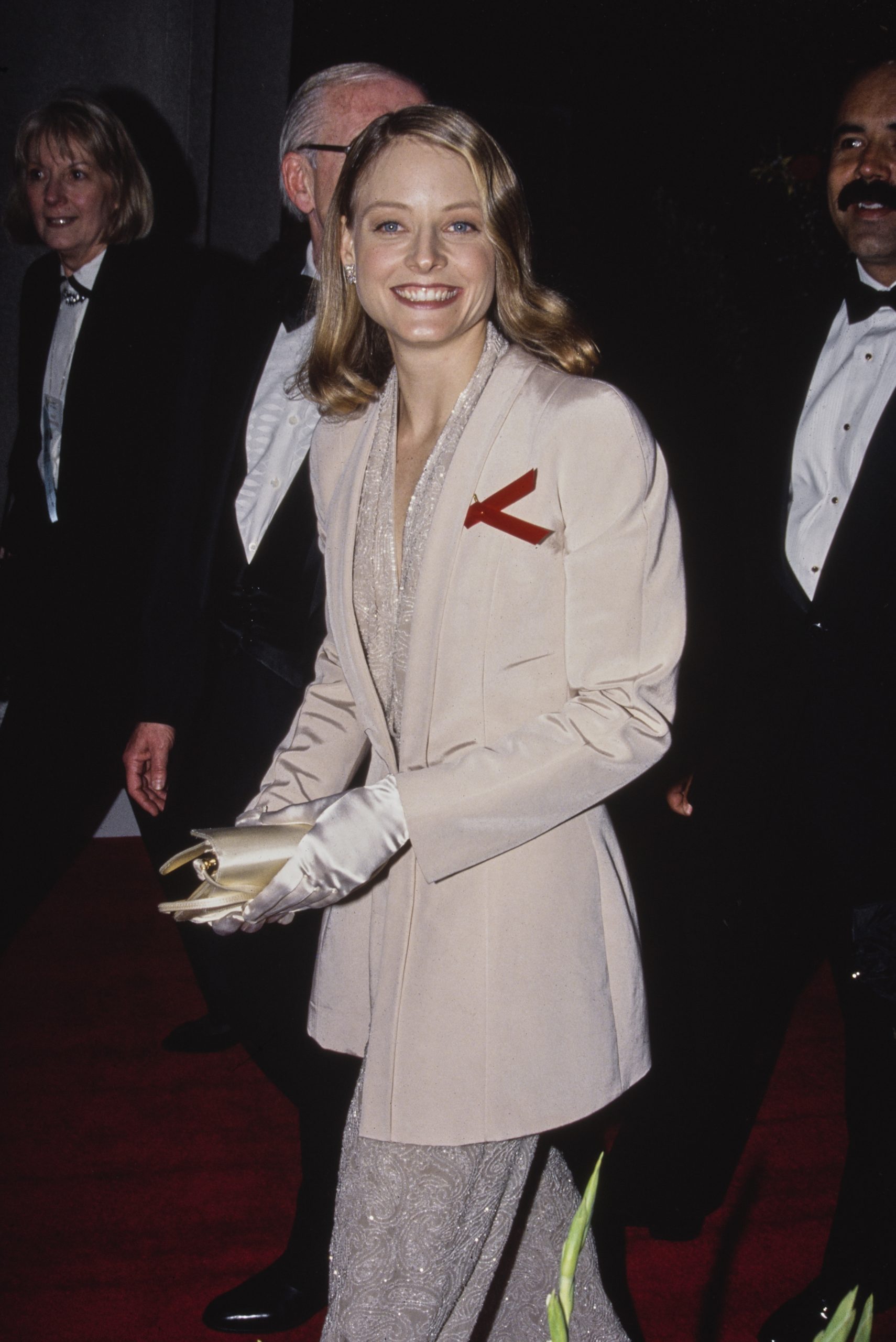When Giorgio Armani, the founder of one of the world’s most revered fashion brands, died at 91 on Sept. 4, he left behind a legion of extraordinarily beautiful clothes, but perhaps no outfit encapsulates the impact he had on his era better than the champagne-and-silver suit Jodie Foster wore when she won the 1992 Academy Award for Best Actress for her role in The Silence of the Lambs. While it doesn’t make it onto all of Armani’s best-of lists, it represents much of what made the Italian designer and the label he founded so successful.
[time-brightcove not-tgx=”true”]
Lambs was not Foster’s first Academy Award. When she won in 1989, for The Accused, she wore a light-blue strapless knee-length sheath in ruched taffeta with an enormous bow at the back. She had chosen it herself off the rack, as was common for Oscar nominees of the era. It was not widely admired at the time, and it has since found its way onto several worst-dressed lists. The following year, she entrusted herself to Armani, and the house has dressed her for the Oscars—and most other events—ever since.
Foster’s embrace of the label was not an accident; Armani had set up a specialist VIP dressing room on Rodeo Drive in the late ‘80s that stars could visit to be styled. He understood the power of Hollywood, having had a huge bump in popularity and exposure after providing all of Richard Gere’s suits for American Gigolo. His strategy was working: in 1990, Julia Roberts caused a stir by wearing an off-the-rack Armani suit when she won a Golden Globe, and so many celebs, male and female, wore the label for the Oscars that year that Women’s Wear Daily dubbed it “the Armani Awards.” Up until that point, Oscar gowns had often been the purview of costume departments and more theatrical designers (save an occasional visit by a Givenchy). Armani was the first to take the Oscars seriously as a fashion event.
Foster’s outfit, and the many photos of it that were published when she won, cemented the symbiotic relationship between contemporary designers, stars, and the Oscars, which began to change the nature of the event. Fashion became a feature of the ceremony. The celebs knew that a well-styled outfit would get them publicity even if they didn’t win—and a bad outfit would too. Designers loved the attention. As the arrival of decked-out stars proved to be as entertaining for viewers as the distribution of awards, the broadcast grew longer, attracted more viewers, more attention, more advertisers, more money, and then more stars and more designers.
But it wasn’t just the Oscars. Armani became associated with celebrity: Lady Gaga at the 2010 Grammys, Cate Blanchett at the 2014 Oscars, and Zendaya at a movie premiere. Rare was the big public event in which none of the bold names were telling red-carpet interlocutors that were wearing Armani. This association helped him with brand extensions: the perfumes, sunglasses, and handbags that finance many labels’ high-fashion lines. Other designers—Valentino, Versace, Oscar de la Renta, to name a few—also successfully courted celebrities, but few had as much success as Armani.
Foster’s pantsuit ensemble was classic Armani: the tailoring was impeccable, but it was in service of a more relaxed silhouette than the Bob Mackie and Arnold Scaasi confections that had been in vogue the prior decade. The silk faille jacket was not quite white but a pale blush, and the loose pants and top beneath had an intricate pattern of silver beads. Foster looked like a million bucks, but she also looked like she wasn’t trying too hard. Her star rose enough as a result that she was on the cover of People’s Most Beautiful People issue that year.
That suit, with its flowing lines and subtle color palette, also marked a pivot away from the louder, bigger, bolder ethos of the ‘80s and toward a quieter definition of sophistication. Armani, who had already introduced unstructured jackets for men and women, was part of the generation of designers who ushered in a less formal fashion era, one that would allow men and women to look refined without looking stuffy. Foster proved it could be done.
These trends had their unintended effects too. In due course the informality and loosening of the customs around dressing would take people all the way to grunge and eventually, in the new millennium, put CEOs of multimillion-dollar companies in hoodies. And as designers increasingly tied their fortunes to famous people, famous people realized they could sell clothes just by wearing them, leading to a rash of clothing lines built in their own images: Victoria Beckham’s eponymous line, Gwyneth Paltrow’s Goop, Kim Kardashian’s Skims, the Olsen twins’ The Row, and Rihanna’s Fenty.
The fashion world Armani just departed is different from the one he entered when he started his label in 1975. It’s more atomized, less orderly, more enmeshed in the culture of fame and of never-ending updates. But at least in part, it’s a world he helped build.

